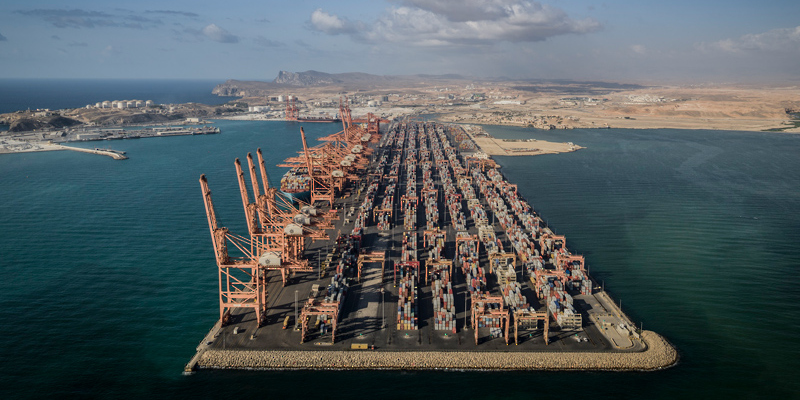Omani Ports… A Value-Added Asset to the National Economy
March 24, 2025
(Handling Over 137 Million Tons and More Than 4.2 Million TEUs in 2024)
Oman’s seaports have been at the forefront of trade exchange, accounting for over OMR 16.5 billion, which represents 77% of the country’s total foreign trade in 2024, covering both imports and exports. Muhanna bin Moosa, Director General of Ports at the Ministry of Transport, Communications, and Information Technology, stated that Omani ports serve as a cornerstone of the logistics system, playing a pivotal role in trade exchange between Oman and the rest of the world. They are among the key enablers of economic diversification, contributing to the achievement of economic development goals in line with Oman Vision 2025. These ports have kept pace with the qualitative growth in regional and global economies by positioning themselves on the world’s major shipping routes.
Operational Activity at Omani Ports
The Director General of Ports added that Omani ports witnessed a notable increase in 2024 in the handling of general, bulk, and liquid cargo, surpassing 137 million tons—an increase of 15% compared to the 119 million tons handled in the previous year. Sohar Port recorded a significant 72% rise in bulk cargo handling, while both Salalah and Suwaiq ports saw a 10% increase in the volume of goods handled. Additionally, Duqm Port recorded a sharp 152% increase in cargo handling across all categories (general, liquid, and bulk), reflecting the expansion of operations and growing demand for the port’s integrated services.
Muhanna bin Moosa also pointed out that Omani ports saw another increase in the number of docked vessels in 2024, reaching over 12,000 ships—an increase of 1.5%. Additionally, more than 4.2 million twenty-foot equivalent units (TEUs) were handled at both Salalah and Sohar ports, with approximately 3.3 million TEUs processed at Salalah Port and more than 942,000 TEUs at Sohar Port.
In the maritime tourism sector, Sultan Qaboos, Khasab, and Salalah ports received around 114 cruise ships carrying over 416,000 tourists in 2024. Furthermore, these ports handled more than 4 million heads of livestock during the year.
Port Expansion and Service Upgrades
The Director General of Ports stated that in 2024, the Ministry signed a concession agreement with Asyad Ports for the development, management, and operation of Suwaiq Port. This aims to expand and upgrade the port to accommodate large vessels and handle various types of cargo to meet increasing demand. Additionally, the expansion and development of the container terminal at Salalah Port were recently completed, raising its capacity to 6.5 million TEUs. This project included upgrading existing berths and expanding storage yards, enabling the port to keep pace with the growing maritime traffic. The upgrades enhance the port’s competitiveness, allowing it to accommodate the world’s largest container ships, which exceed 366 meters in length and can carry over 14,500 TEUs, ensuring increased productivity and faster clearance operations.
Muhanna bin Moosa further noted that one of the latest steps taken by the Ministry to enhance the role of ports in economic and logistics contributions was the signing of a framework agreement for investment in ship services and crew change operations at Sultan Qaboos Port. This initiative will introduce commercial activities to this vital port, complementing its primary role as a tourism port. These commercial advantages will make Sultan Qaboos Port an attractive hub for both commercial and cruise ships. The port is set to undergo rapid development in collaboration with Asyad Group and Omran Group.


Credit for this article is given to the Media Centre of the Ministry of Transport, Communications and Information Technology in Oman.